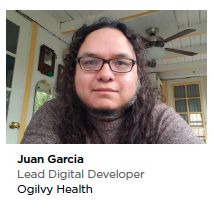 More and more, pharmaceutical companies are continuing to leverage wearable technology to not only track patient information and vitals, but also track their behavior over time. When a patient’s vitals are taken at a medical facility, only a brief window of data is recorded and monitored. With wearable technology, a wider breadth of data is retained over a longer period of time. Health trends can be more closely monitored before problems arise. Tracking patient behavior over time can pinpoint adverse reactions, and it can help prevent those reactions from happening in the first place.
More and more, pharmaceutical companies are continuing to leverage wearable technology to not only track patient information and vitals, but also track their behavior over time. When a patient’s vitals are taken at a medical facility, only a brief window of data is recorded and monitored. With wearable technology, a wider breadth of data is retained over a longer period of time. Health trends can be more closely monitored before problems arise. Tracking patient behavior over time can pinpoint adverse reactions, and it can help prevent those reactions from happening in the first place.
Sleek-looking smart watches are now more comfortable to wear than their predecessors and also gather a wealth of more useful information. The newest array of devices are carrying more sensors than before. For instance, Apple announced its newest Apple Watch can measure blood oxygen levels, detect when an individual falls down, and monitor the user’s pulse, among other advancements. A first for device makers — Apple’s newest software can measure irregular heart rhythms and produce an ECG for the user.
Smart rings are also beginning to make a name for themselves in the wearables ecosphere. Companies including Oura, Motiv, and Wellue, to name a few, are creating their own versions with heartrate monitors, oxygen-level trackers, and sleep monitors. Oura’s rings offer a body temperature sensor — a benefit that currently isn’t even available on the Apple Watch.
Smart speakers have made a lot of headway into the healthcare services arena recently. Patients can use smart speakers in their homes to remind them to take their medication and to check their blood glucose levels. Smart speakers could also help physicians with the documentation process associated with working with electronic health records (EHRs). A patient’s records can be recalled and updated while the patient and doctor are communicating with the device in real time.
Alternate settings for smart speaker technology are being used as well. Hospitals, for instance, are pairing children and parents with devices that can help with medication dosing and address other common non-emergency medical issues.
Smart speaker technology is also being used specifically for the elderly and patients with dementia. Senior-living facilities are making use of this technology by employing it to remind seniors of their schedules, answer general inquiries, or even to play games. The smart speakers are offering users the opportunity to reclaim some of their independence. Another common use for this technology is simply to play the favorite song of a patient who is experiencing a dementia-related episode to help calm him or her.
Adapating to a New Normal
With COVID-19, many senior-living facilities comprising an especially vulnerable sector of the population have had to go into lockdown. This often means isolation and no outside contact among the residents. Robotic pets have been introduced to reduce loneliness and stress associated with the lockdowns. These realistic pets can bark and purr, nuzzle and, using smart speaker technology, can respond to voices and commands. Caregivers don’t need to worry about the robots’ health and well-being, as these robotic pets are sturdier than their real-life counterparts. This is particularly important for patients with dementia. Staff and caretakers have to be trained to treat the robots as real pets as it can be distressing for dementia patients who see the pets being mistreated by improper handling. Residents will often treat and care for these electronic pets as though they are real — even when the residents know they are robots.
An added benefit of smart speaker technology — a study from 2019 has found that depression levels of seniors with smart speakers dropped by 44% over a six-month period.
Smart Data Gathering
Smartphones, smart watches, and home monitoring technology are providing huge leaps in convenience and access to information, but also in data gathering. These sensor-packed devices, provide a wealth of personal data that are ready to be interpreted and consumed — but not with human eyes.
Tying all of the data together could provide a history that can then be analyzed with a sophisticated artificial intelligence (AI) platform. AI can tell us to get up and move, remind us to take our medication and monitor pulse, breathing patterns and rising temperatures. What we will soon see is an AI that not only looks at a narrow set of data provided by one or two devices, but an AI that will see everything — everything about you and the data supplied by all of your devices. A predictive AI that can make assumptions about impending health risks will give doctors more insight into your health conditions, can help prevent personal health crises, and improve an individual’s overall quality of life.(PV)
Ogilvy Health makes brands matter by keeping our audiences’ health, healthcare and wellness needs at the center of every touchpoint.
For more information, visit ogilvyhealth.com.


















